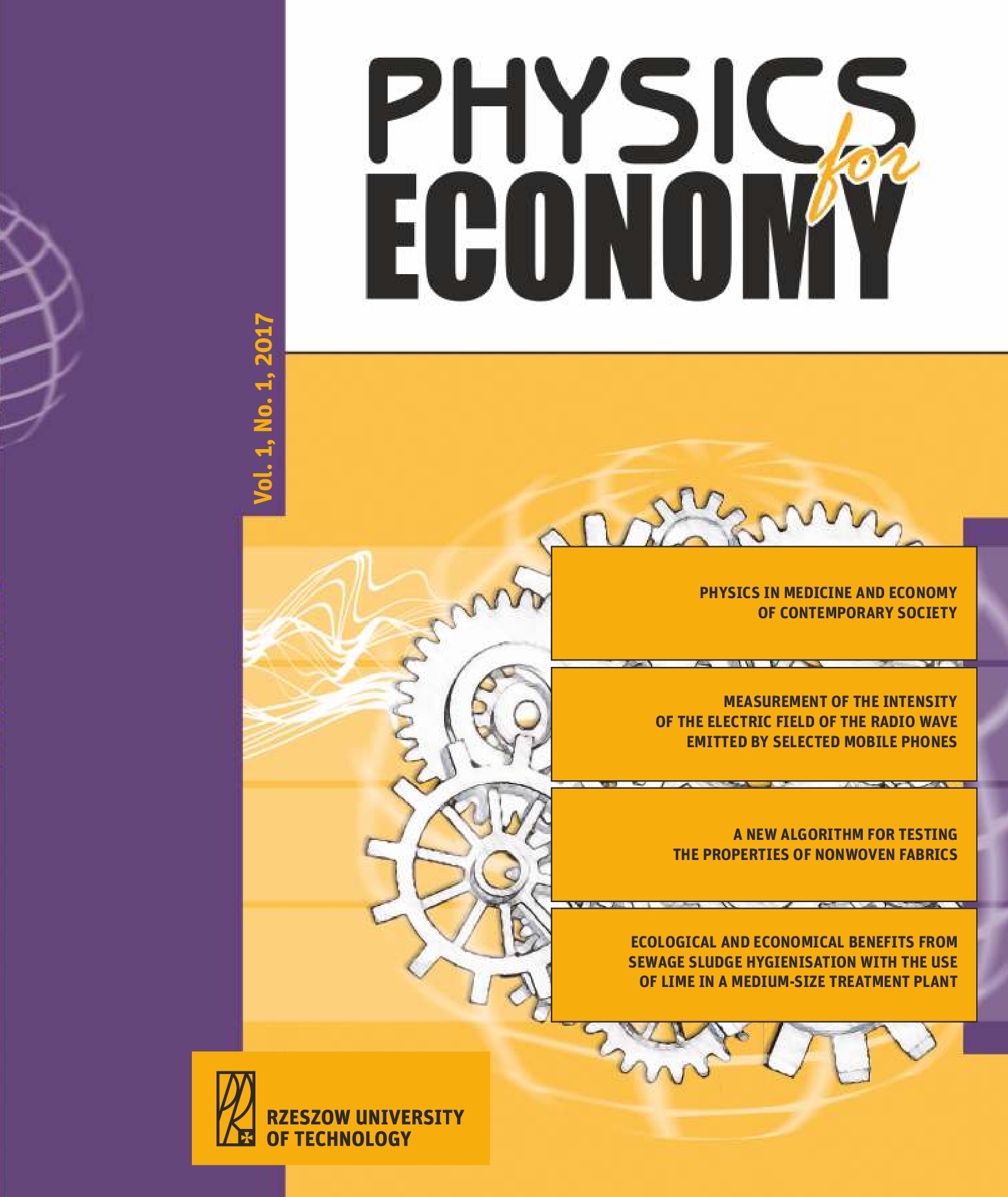Abstract
Sewage sludge classified as hazardous waste requires searching for advanced and more effective methods of utilization. Waste produced in treatment plants, should be subject to proper reprocessing on the grounds of health, economic and legal reasons. In treatment plants, hygienisation with the use of lime (CaO) is commonly applied. The main advantage of the aforementioned method is the growth of pH value of sewage sludge and the reduction of pathogens. Apart from this, sewage sludge hygienisation with the application of lime is characterized by the high costs associated with the acquisition of lime. Assuming the price of highly reactive lime ranging from EUR 67-82 per one tone, additional cost of approximately EUR 8600 is generated for a medium treatment plants per year. Additionally, the liming of sewage sludge requires the modernization of treatment plants and the acquisition of new equipment. But due to the fertilizing properties of aforementioned waste, the agricultural utilisation of sewage sludge is the best method for small and medium treatment plants. The financial feasibility analysis showed that the whole undertaking will pay off within 7 years. This paper presents the cost-effective analysis of sewage sludge hygienisation in medium municipal treatment plant. In this article, the main mechanism of process and the influence of liming on sewage sludge characteristics are also showed.
References
Zahin M.W., Cost analysis of trickling-filtration and activated-sludge plants for the treatment of municipal wastewater, Proceeding of the Seventh Saudi Engineering Conference, 2nd-5th December 2014, Ritadh, Saudi Arabia, 2, pp. 67-81.
Regulation of the Minister of Economy of July 16, 2015 on the Acceptance of Waste for Landfill [J. of Laws from 2015, item 1277].
Niemiec W., Wójcik M., Możliwości wykorzystania komunalnych osadów ściekowych w wybranych oczyszczalniach, ZN Mechanika, 2015, 87, 4, pp. 339-347.
Gondek K., Filipek-Mazur B., Akumulacja mikroelementów w biomasie owsa oraz ich dostępność w glebie nawożonej kompostem z odpadów roślinnych, Acta Agrophysica, 2006, 8, 3, pp. 579-590.
Henclik A., Kulczycka J., Gorazda K., Wzorek Z., Uwarunkowania gospodarki osadami ściekowymi w Polsce i Niemczech, Inżynieria i Ochrona Środowiska, 2014, 17, 2, pp. 185-197.
Niemiec W., Stachowicz F., Trzepieciński T., Wójcik M., Land-Applying Municipal Sludge in Energetic Willow Plantations, Proceedings of The International Multidisciplinary Conference, 12th Edition, 24th-26th May 2017, Baia Mare – Nyireghaza, pp. 69-72.
Regulation of Minister of Environment of 6 February 2015 on Urban Sewage Sludge [J. of Laws from 2015, item 257].
Yu Y., Chan W.I., Liao P.H., Lo K.V., Disinfection and solubilization of sewage sludge using the microwave enhanced advanced oxidation process, Journal of Hazardous Materials, 2010, 181, pp. 1143-1147.
Podedworna J., Umiejewska K., Technologia osadów ściekowych, Oficyna Wydawnicza Politechniki Warszawskiej, Warszawa 2008.
Marcinkowski T., Przetwarzanie osadów ściekowych w procesie wapnowania, Polskie Zrzeszenie Inżynierów i Techników Sanitarnych, Poznań 2010.
Bień J., Wystalska K., Osady ściekowe – teoria i praktyka, Seidel-Przywecki Publishing House, Częstochowa 2011.
Bazeli M., Higienizacja osadów ściekowych – wapnowanie, Forum Eksploatatora, 2006, 24, 3, pp. 17-20.
Malej J., Właściwości osadów ściekowych oraz wybrane sposoby ich unieszkodliwiania i utylizacji, Rocznik Ochrona Środowiska, 2000, 2, pp. 69-101.
Marcinkowski T., Stosowanie różnych form wapna w procesach przetwarzania komunalnych osadów ściekowych. Część 3. Przetwarzanie osadów tlenkiem wapnia, Forum Eksploatatora, 2009, 41, 2, pp. 39-41.
Marcinkowski T., Decontamination of Sewage Sludges with Quicklime, Waste Management & Research, 1985, 3, pp. 55-64.
Stachowicz F., Trzepieciński T., Wójcik M., Masłoń A., Niemiec W., Piech W., Agricultural utilisation of municipal sludge in willow plantation, E3S Web of Conferences, 2016, 10, pp. 1-6.
Niemiec W., Stachowicz F., Trzepieciński T., Wójcik M., Obróbka komunalnego osadu ściekowego przeznaczonego do nawożenia plantacji roślin energetycznych, [in:] Zrównoważona gospodarka zasobami przyrodniczymi i kulturowymi na Pogórzu Dynowskim determinantą rozwoju turystyki, Związek Gmin Turystycznych Pogórza Dynowskiego, Dynów 2017, p. 133-150.
Rosikoń K., Osady ściekowe w nawożeniu wybranych roślin energetycznych, Inżynieria i Ochrona Środowiska, 2014, 17, pp. 339-348.


